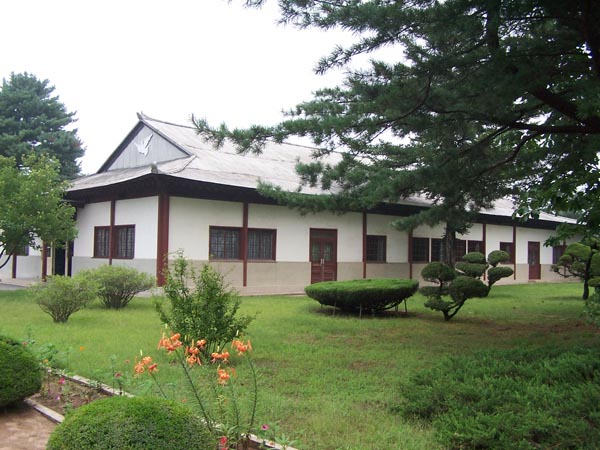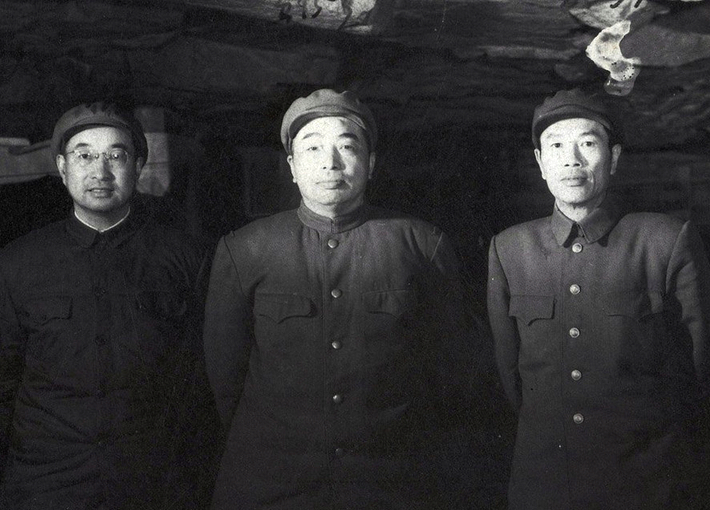|
Da Yuan Shuai
() was a Chinese military rank, usually translated as grand marshal. During the early Republic of China, the rank of was assumed by Yuan Shikai in 1913, Sun Yat-sen in 1917 and Zhang Zuolin in 1927. The rank was replaced by the Nationalist government with the "general special class" or and awarded to Chiang Kai-shek in 1935. The rank of was proposed after the establishment of the People's Republic for Mao Zedong, but was refused by Mao. Background Grand Marshals historically and in China In the Chinese context, "Grand Marshal" or "Grand General" () have appeared in ancient China as titles for supreme commanders of the army. For example, "Grand Marshal of the World Soldiers and Horses" in the Liao Dynasty was an important title for the crown prince or the heir to the throne, but they were only court titles rather than military ranks. After modern China, the "General Marshal" became the honorary or post title of the head of state or the supreme commander of the nati ... [...More Info...] [...Related Items...] OR: [Wikipedia] [Google] [Baidu] |
People's Liberation Army
The People's Liberation Army (PLA) is the military of the Chinese Communist Party (CCP) and the People's Republic of China (PRC). It consists of four Military branch, services—People's Liberation Army Ground Force, Ground Force, People's Liberation Army Navy, Navy, People's Liberation Army Air Force, Air Force, and People's Liberation Army Rocket Force, Rocket Force—and four arms—People's Liberation Army Aerospace Force, Aerospace Force, People's Liberation Army Cyberspace Force, Cyberspace Force, People's Liberation Army Information Support Force, Information Support Force, and People's Liberation Army Joint Logistics Support Force, Joint Logistics Support Force. It is led by the Central Military Commission (China), Central Military Commission (CMC) with its Chairman of the Central Military Commission (China), chairman as Supreme Military Command of the People's Republic of China, commander-in-chief. The PLA can trace its origins during the Republic of China (1912– ... [...More Info...] [...Related Items...] OR: [Wikipedia] [Google] [Baidu] |
New Fourth Army
The New Fourth Army (N4A) () was a military unit nominally under the banner of the National Revolutionary Army (NRA) of the Republic of China, established in 1937 as part of the Second United Front against Japan. However, in practice, the New Fourth Army was under the exclusive command of the Chinese Communist Party (CCP) and operated independently of the Kuomintang (KMT) central military command. Unlike most NRA units, which were directly overseen by the Nationalist Government, the N4A maintained separate political and operational structures aligned with CCP objectives. The New Fourth Army and the Eighth Route Army were the two main communist forces from 1938. The New Fourth Army was active south of the Yangtze River (Chang Jiang), while the Eighth Route Army was based in Yan'an in the northwest. Members of the New Fourth Army wore their badges on the left arm, with ''"N4A"'' and the soldier's unit and name listed on the badge. After the Xi'an Incident, the Kuomintang led b ... [...More Info...] [...Related Items...] OR: [Wikipedia] [Google] [Baidu] |
Military Ranks Of The Republic Of China (1912–1949)
The military ranks of the Republic of China (1912–1949) were the military insignia used by the Beiyang Army, National Revolutionary Army, Republic of China Navy, and Republic of China Air Force. The ranks were introduced following the 1911 Revolution, abdication of the Xuantong Emperor and continued to be used by the Republic of China Armed Forces, following the Retreat of the government of Republic of China to Taiwan, retreat to Taiwan. Army ranks Commissioned officer ranks The rank insignia of commissioned officers. Other ranks The rank insignia of non-commissioned officers and Enlisted rank, enlisted personnel. Navy ranks Commissioned officer ranks The rank insignia of commissioned officers. Other ranks The rank insignia of non-commissioned officers and Enlisted rank, enlisted personnel. Air force ranks Commissioned officer ranks The rank insignia of commissioned officers. Other ranks The rank insignia of non-commissioned officers and Enlisted rank, enlisted person ... [...More Info...] [...Related Items...] OR: [Wikipedia] [Google] [Baidu] |
Central Military Commission (China)
The Central Military Commission (CMC) is the highest military leadership body of the Chinese Communist Party (CCP) and the China, People's Republic of China (PRC), which heads the People's Liberation Army (PLA), the People's Armed Police (PAP), and the Militia (China), Militia of China. There are technically two separate commissions; the Central Military Commission of the Chinese Communist Party and the Central Military Commission of the People's Republic of China. Under the arrangement of "one institution with two names", both commissions have identical personnel, organization and function, and operate under both the party and state systems. The commission's parallel hierarchy allows the CCP to supervise the political and military activities of the PLA, including issuing directives on senior appointments, troop deployments and arms spending. The CMC is chaired by Xi Jinping, the General Secretary of the Chinese Communist Party and paramount leader. Almost all the members are ... [...More Info...] [...Related Items...] OR: [Wikipedia] [Google] [Baidu] |
United States Armed Forces
The United States Armed Forces are the Military, military forces of the United States. U.S. United States Code, federal law names six armed forces: the United States Army, Army, United States Marine Corps, Marine Corps, United States Navy, Navy, United States Air Force, Air Force, United States Space Force, Space Force, and the United States Coast Guard, Coast Guard. Since 1949, all of the armed forces, except the Coast Guard, have been permanently part of the United States Department of Defense. They form six of the eight uniformed services of the United States. Each of the different military services is assigned a role and domain. The Army conducts land operations. The Navy and Marine Corps conduct maritime operations, the Marine Corps specializing in amphibious and maritime littoral operations primarily for supporting the Navy. The Air Force conducts air operations. The Space Force conducts space operations. The Coast Guard is unique in that it specializes in maritime opera ... [...More Info...] [...Related Items...] OR: [Wikipedia] [Google] [Baidu] |
Korean Armistice Agreement
The Korean Armistice Agreement (; zh, t=韓國停戰協定 / 朝鮮停戰協定) is an armistice that brought about a cessation of hostilities of the Korean War. It was signed by United States Army Lieutenant General William Kelly Harrison Jr., William Harrison Jr. and General Mark W. Clark representing the United Nations Command (UNC), North Korea leader Kim Il Sung and General Nam Il representing the Korean People's Army (KPA), and Peng Dehuai representing the China, Chinese People's Volunteer Army (PVA). The armistice was signed on 27 July 1953, and was designed to "ensure a complete cessation of hostilities and of all acts of armed force in Korea until a final peaceful settlement is achieved." During the 1954 Geneva Conference in Switzerland, Chinese premier, Chinese Premier and foreign minister Zhou Enlai suggested that a peace treaty should be implemented on the Korean peninsula. However, the US secretary of state, John Foster Dulles, did not accommodate this attempt to ... [...More Info...] [...Related Items...] OR: [Wikipedia] [Google] [Baidu] |
Peng Dehuai
Peng Dehuai (October 24, 1898November 29, 1974; also spelled as Peng Teh-Huai) was a Chinese general and politician who was the Minister of National Defense (China), Minister of National Defense from 1954 to 1959. Peng was born into a poor peasant family, and received several years of primary education before his family's poverty forced him to suspend his education at the age of ten, and to work for several years as a manual laborer. When he was sixteen, Peng became a professional soldier. Over the next ten years Peng served in the armies of several Hunan-based warlord armies, raising himself from the rank of private second class to major. In 1926, Peng's forces joined the Kuomintang, and Peng also got introduced to communism during this time. Peng participated in the Northern Expedition, and supported Wang Jingwei's attempt to form a Wuhan Nationalist government, left-leaning Kuomintang government based in Wuhan. After Wang was defeated, Peng briefly rejoined Chiang Kai-shek ... [...More Info...] [...Related Items...] OR: [Wikipedia] [Google] [Baidu] |
People's Volunteer Army
The People's Volunteer Army (PVA), officially the Chinese People's Volunteers (CPV), was the armed expeditionary forces China in the Korean War, deployed by the History of the People's Republic of China (1949–1976), People's Republic of China during the Korean War. Although all units in the PVA were actually transferred from the People's Liberation Army (PLA) under the orders of Chairman of the Chinese Communist Party, Chairman Mao Zedong, the PVA was separately constituted in order to prevent an official war with the United States. The PVA entered Korea on 19 October 1950 and completely withdrew by October 1958. The nominal commander and political commissar of the PVA was Peng Dehuai before the Korean Armistice Agreement, ceasefire agreement in 1953, although both Chen Geng and Deng Hua served as the acting commander and commissar after April 1952 following Peng's illness. The initial (25 October – 5 November 1950) units in the PVA included 38th, 39th, 40th, 42nd, 50th, 66 ... [...More Info...] [...Related Items...] OR: [Wikipedia] [Google] [Baidu] |
Zhou Enlai
Zhou Enlai ( zh, s=周恩来, p=Zhōu Ēnlái, w=Chou1 Ên1-lai2; 5 March 1898 – 8 January 1976) was a Chinese statesman, diplomat, and revolutionary who served as the first Premier of the People's Republic of China from September 1954 until Death of Zhou Enlai, his death in January 1976. Zhou served under Chairman Mao Zedong and aided the Chinese Communist Party, Communist Party in rising to power, later helping consolidate its control, form its Foreign policy of China, foreign policy, and develop the Economy of China, Chinese economy. As a diplomat, Zhou served as the Chinese Foreign Minister of the People's Republic of China, foreign minister from 1949 to 1958. Advocating peaceful coexistence with Western Bloc, the West after the Korean War, he participated in the 1954 Geneva Conference and the 1955 Bandung Conference and helped orchestrate 1972 Nixon visit to China, Richard Nixon's 1972 visit to China. He helped devise policies regarding disputes with the United States, ... [...More Info...] [...Related Items...] OR: [Wikipedia] [Google] [Baidu] |





